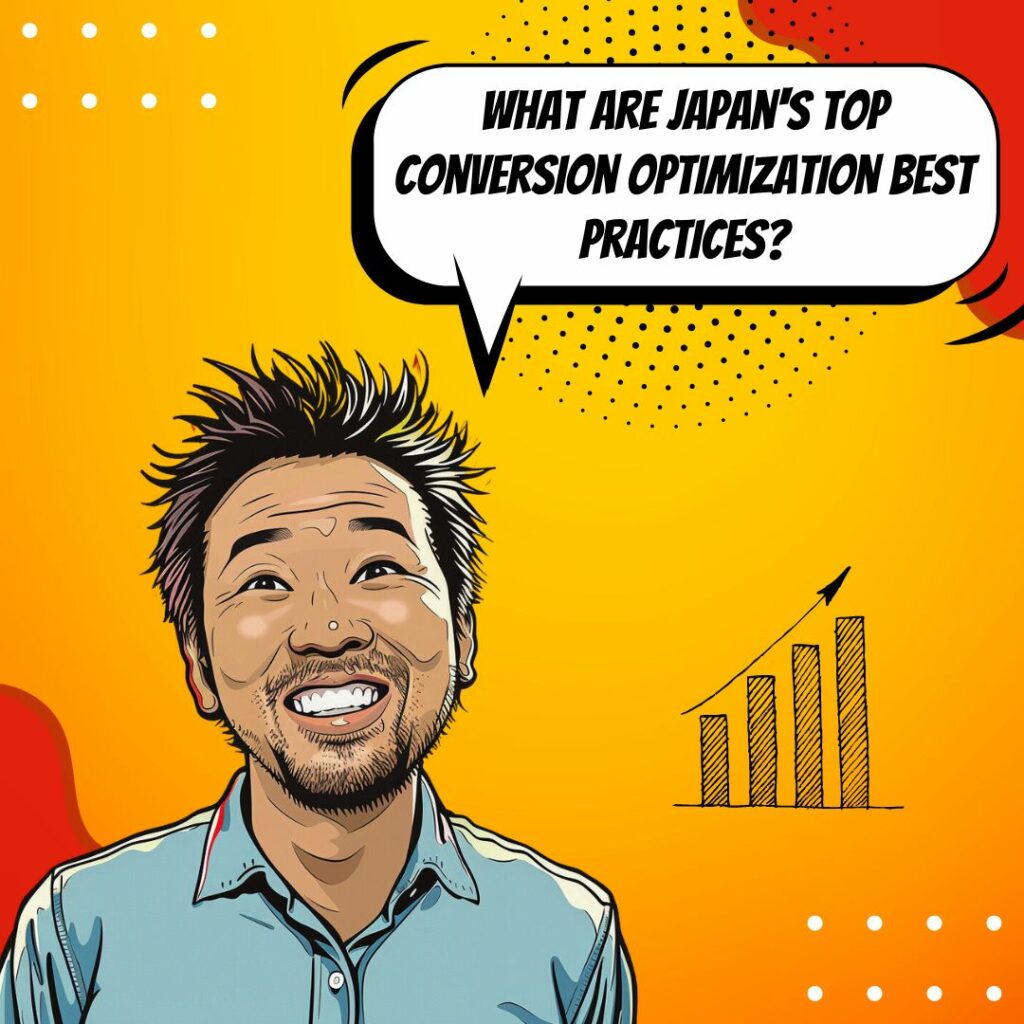Key Takeaways
✅ Cultural Sensitivity and Localization: Dive into the art of appealing to Japanese culture in your online presence. Learn why choosing the right colors, animations, and certifications can earn you a nod of appreciation from potential Japanese customers.
✅ Mobile-First Approach: With nearly everyone in Japan using smartphones, find out how optimizing for mobile can open doors to a world of opportunities. It’s not just about looking good on a small screen, it’s about making the whole shopping journey a breeze.
✅ Personalization and Trust-Building: Let’s talk about the personal touch. Understand how tailoring your approach can lead to winning the trust of Japanese shoppers. It’s all about valuing their choices and making them feel at home on your site.

Introduction
Ever wondered why some businesses thrive in the bustling Japanese market while others struggle to make a dent? It's not just about having a shiny product or a clever sales pitch; it's about understanding the heartbeat of the market: Conversion Optimization designed for Japanese audiences. Why do some sites see a flood of traffic but barely any sales, while others seem to turn every click into gold?
It begins with a fusion of technology and tradition, a dance between modern tactics and time-tested cultural nuances. In Japan, gaining trust is not just a business strategy; it's a quintessential part of the consumer’s journey— a path paved with quality, reputation, and the spirit of omotenashi (hospitality). This article peels back the layers on how to align with the preferences that shape Japanese buying behavior.
But wait, there’s more – we'll walk through the digital alleys of Tokyo and Osaka, taking cues from businesses that have cracked the code. These are not just stories; they're blueprints for success. From surprising A/B test results to the secrets behind mobile usability miracles, get ready for a tour of real-world strategies that have catapulted brands to new heights in the Land of the Rising Sun.
Top Statistics
| Statistic | Insight |
|---|---|
| E-commerce Market Growth: Expected to reach $211.9 billion in 2025, CAGR of 6.4% from 2021 to 2025. (Source: Statista) | This growth indicates a booming e-commerce environment, one where timely adaptation and innovation could spell the difference between success and failure for brands. |
| Mobile Commerce Expansion: Projected to reach $112.05 billion in 2024, with a CAGR of 10.3%. (Source: Statista) | Mobile is huge in Japan, isn't it? Sellers need to ensure their sites are slick on phones. If not, they're missing out, simple as that. |
| Localization Impact: Essential for conversion optimization in Japan. (Source: Think with Google) | When you shop, don't you like to read about products in your own language? The same goes for audiences in Japan – they want to feel at home on your site. |
| Case Study - Nissan: 50% increase in conversion rate by optimizing its mobile website. (Source: Think with Google) | Nissan didn't reinvent the wheel; they just made sure their site didn't take ages to load on mobile. And guess what? It paid off big time for them. |
| AI and ML in Conversion: Projected market size of $1.7 billion by 2025. (Source: MarketsandMarkets) | AI and ML are more than just buzzwords; they're the future. Japanese market is gearing up, are you ready to ride the artificial intelligence and machine learning wave too? |
Understanding Japanese Consumer Behavior
Have you ever wondered why some products fly off the shelves in Japan, while others just gather dust? It's all about tapping into the Japanese consumer psyche. In Japan, folks place a huge emphasis on trust. They're also incredibly particular about quality and the reputation of brands. But here's a question for you: how do businesses earn this trust? Well, it's not just about splashing out on flashy ads. Social proof is the name of the game. If a friend recommends something, or there's a buzz about it on social media, that counts for a lot. Another secret ingredient is omotenashi, which is a unique kind of Japanese hospitality. It's all about making the customer feel cherished and respected. When companies get this right, it's pure gold for their reputation.
Best Practices for Conversion Optimization in Japan
Let's dive straight into one of the most critical parts: optimizing your website for Japanese audiences. To strike a chord with the locals, your site’s design and user experience need a sprinkle of familiarity and a whole lot of localization. You can't just translate your content; you've got to shape it to fit cultural tastes. Here's a thought: why not use local payment methods and amp up the privacy settings to show that you're serious about catering to the Japanese market? Integrating Japanese customer service options is also a powerhouse move. It's these thoughtful touches that can turn a casual browser into a loyal customer.
Case Studies: Conversion Optimization Strategies
Now, let's get real with some actual stories. There are international and domestic companies that have really cracked the code when it comes to connecting with Japanese consumers. Take, for instance, businesses that form local partnerships; they often see their conversion rates soar because they've got that local credibility. Others win big with killer social media campaigns or by offering personalized shopping experiences. Ethical question to ponder: should companies adapt their strategies to fit a country's culture, or should they stick to their global brand image? It's a delicate balance, but those who get it right reap the rewards.
A/B Testing and Data-Driven Optimization
Wanna know what's behind those mysterious boosts in sales? A/B testing and analyzing data! Imagine two versions of a webpage duking it out to see which one lures in more customers. That's A/B testing in action. It's especially vital in Japan, where small tweaks can lead to major improvements in how customers engage with a brand. It's not all about gut feelings; it’s the numbers that tell the true story. Using the right tools and techniques to collect and interpret data can shine a light on what Japanese consumers really want. And once you've got that intel, tailoring your approach can turn potential interest into real sales.
AI Marketing Engineers Recommendation
Recommendation 1: Embrace Mobile-First Designs: It's no secret that in Japan, folks are practically attached to their mobile devices. Did you know a staggering 92% of internet users in Japan are browsing the web on their phones? That's a lot of thumbs scrolling screens! So, when thinking about making your website or online shop more appealing, you've got to think "mobile-first." Ensure your site is as smooth as a bullet train ride on those smartphones. Fast loading times, easy navigation, and thumb-friendly buttons can really crank up those conversion rates. Remember, if they can't tap it right, they won't buy it!
Recommendation 2: Utilize Localized Content and Native Design: Guess what? Even in our high-tech world, folks still crave that local touch. So, when you adapt your site for the Japanese market, don't just give it a quick language swap. Dive deep into what makes your Japanese customers tick. Are you using the kind of polite language and formalities they respect? Is the design minimalist and clean, something many Japanese consumers love? Cultural nuances can make or break a deal. Current trends show a move towards hyper-localization in marketing strategy. Personalize the experience, and you'll see those conversion numbers jump up.
Recommendation 3: Implement Chatbots with Cultural Intelligence: Let's talk about chatbots – they're like those helpful little shop assistants who pop up just when you need them. But here's the catch - your chatbots need to be culturally savvy to win over a Japanese audience. With AI getting smarter every day, a chatbot that understands local etiquette and can respond appropriately is gold. Why? Because in Japan, customer service isn't just helpful; it's an art form. Having a chatbot that can offer detailed, polite responses, and guide users through the purchase process can make a huge difference. It's not just about efficiency; it's about building that trust and connection that Japanese customers value so highly.
Relevant Links
- Omotenashi: Japan's Secret to Winning Customer Trust
- Winning Strategies: Case Studies from the Japanese Market
- Tailoring Your Website for the Japanese Market: A Comprehensive Approach
- Why are SEO and SEM Essential for the Japanese Market?
Conclusion
As we wrap up our journey through the intricate world of conversion optimization for a Japanese audience, have you felt the unique pulse of this distinguished market? It's clear that the cultural heartbeat of Japan heavily influences consumer behavior, doesn't it? From the deep-rooted value of trust to the expectation of top-notch quality and the essence of omotenashi, adapting to these nuances isn't just smart, it's essential.
But how do you blend these insights into a digital strategy that resonates with this audience? Remember the best practices we've discussed? The meticulous localization, the thoughtful user experience tailored for Japanese preferences, and the embrace of preferred payment methods are just the tip of the iceberg. And, let's not forget about the power of Japanese customer service which can truly make or break a campaign.
Digging into those case studies, it's fascinating to see both local and international brands succeed, isn't it? They didn't just chance upon success; they pursued it with data-driven strategies, unwavering persistence in A/B testing, and an openness to adapt based on what the numbers revealed. We're at a fascinating intersection now, where cultural appreciation meets cutting-edge technology. The future of optimizing conversions in Japan is bright and ripe with opportunities. And as for emerging technologies, can you imagine the potential they have to further revolutionize these practices?
So, as we part ways, I'm curious – inspired by these case studies and best practices, how will you tweak your strategy for the Japanese market? Will you double down on data and respect the cultural context, committing to continuous improvement and innovation? The beauty of conversion optimization lies in its ongoing journey – where will yours take you next in the Land of the Rising Sun?
FAQs
Question 1: What is Conversion Optimization (CO) in the context of Japanese audiences?
Answer: Conversion Optimization is like fine-tuning your website to get more people in Japan to do what you hope they'll do—whether that's buying something, signing up for your updates, or just getting in touch. It’s all about making your digital spot inviting and easy-to-use, respecting the cultural vibe and lingo.
Question 2: What are the key cultural differences to consider when optimizing for Japanese audiences?
Answer: When you're chatting with folks from Japan, remember they dig simplicity and a smooth, classy look. Trust and reputation are superstars here. Using these ingredients right will help you connect better with your Japanese visitors.
Question 3: How can I localize my website for Japanese audiences?
Answer: To make your website feel like it was born in Japan, translate that content, show prices in yen, give 'em familiar payment methods, and throw in visuals that hit close to home. It’s like making sure your guest feels right at home in your digital living room.
Question 4: What are some best practices for optimizing website design for Japanese audiences?
Answer: Imagine you’re designing a zen garden: space things out nicely, use beautiful visuals, and don't bury the important stuff. Keep it neat and sweet for those mobile screens, too—that’s super important around here.
Question 5: How can I use social proof to improve conversion rates for Japanese audiences?
Answer: Here's the deal: Japanese web surfers fancy knowing what others think. So, show off those glowing reviews, spotlight happy customer stories, and don’t be shy to flaunt how many friends you’ve got on social media.
Question 6: What are some common mistakes to avoid when optimizing for Japanese audiences?
Answer: Watch out for these faux pas: jumbling up your site with too much stuff, using complex words, or getting cultural cues wrong. And, don’t stereotype—everyone’s different, even within Japan.
Question 7: Can you provide some case studies of successful conversion optimization for Japanese audiences?
Answer: You bet! Check out how Rakuten has tailored payment methods just tight, Uniqlo's website winning with a minimalist design, or Shiseido’s smart use of reviews that dish out the trust factor.
Question 8: What are some advanced techniques for conversion optimization for Japanese audiences?
Answer: Ready to level up? Try personalizing the shopper's journey, do some A/B testing to see what clicks, and dig into that data. Throw in a helpful chatbot and some catchy videos for extra spice.
Question 9: How can I measure the success of my conversion optimization efforts for Japanese audiences?
Answer: To see if you're nailing it, use tools like Google Analytics, keep an eye on conversion rates and see how long folks stick around. Feedback and surveys can also drop some knowledge on you about what's working and what’s not.
Question 10: What resources can I use to stay up-to-date on best practices for conversion optimization for Japanese audiences?
Answer: Stay in the know by keeping up with marketing blogs, hitting up conferences, and mingling in forums and social scenes online. And of course, following the pros on social media can give you heaps of insights.
Academic References
- Kuwahara, H., & Kurosu, M. (2004). Cultural Differences in Web Design and Usability: A Comparative Study between Japan and the United States. In Human-Computer Interaction. Lecture Notes in Computer Science, vol 3081. This study illuminates the crucial role of cultural nuances in web design and usability, showcasing a compelling comparison between Japan and the States. It serves as a guiding light for crafting websites that resonate with Japanese users' tastes and expectations.
- Santos, E. E., Tatar, D. H., & Yano, Y. (2003). Cross-Cultural Web Site Design: An Investigation of Japanese and American Web Sites. Proceedings of the Fifth Conference on Cultural Attitudes Towards Technology and Communication. (pp. 471-483). Here, the authors delve into the distinct paths Japanese and American websites take when it comes to visual flair, how they lay out their content, and map their navigation. It's an eye-opener on how culture weaves itself into web design and user journeys.
- Ishihara, Y., & Yamakoshi, Y. (2006). A Study on the Effects of Cultural Differences in the Design of Websites for Japanese and American Users. International Journal of Human-Computer Interaction. 19(3), 5-15. Ishihara and Yamakoshi cast the spotlight on how culture can shape web design, discussing the significance of cultural values in crafting digital experiences that really speak to users and might just nudge up those conversion rates.
- Ishihara, Y., & Yamakoshi, Y. (2007). Cross-cultural e-commerce: A comparison of online consumer behavior in Japan and the United States. International Journal of Consumer Studies. 31(6), 602-611.
This comparative study peeks into the digital behaviors of shoppers from different cultural backgrounds, teasing out differences that influence trust, risk perception, and that all-important click to buy. Insights here could be pure gold for tweaking how you sell online to Japanese consumers.












